
Canal Life and England’s Largest Collection of Canal Craft
[caption id="TheNationalWaterwaysMuseumatEllesmerePort_Feature" align="aligncenter" width="935"]
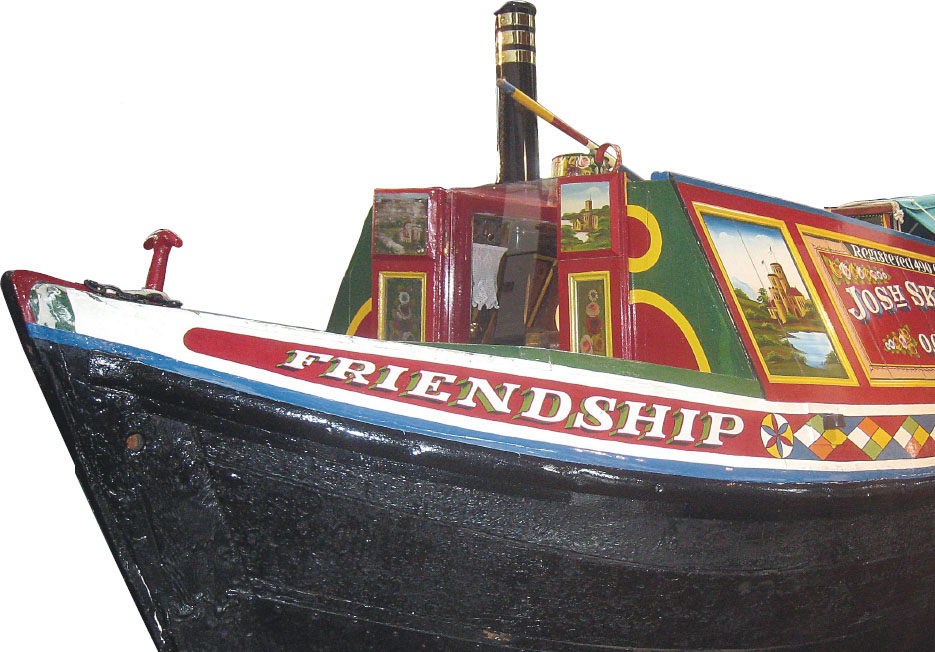
ROGER PASCHKE
From the 18th century until the late 1950s, narrow boats plied the canals of England carrying coal, china clay, iron ore and other raw materials to factories, and returning with manufactured goods. Sometimes whole families lived in cramped conditions on the boats, pitching in to open the lock gates, steer the craft and lead the dainty-footed Vanner horses—the source of the word “van”—down the towpaths.
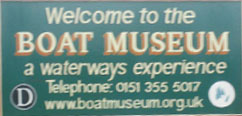
ROGER PASCHKE
[caption id="TheNationalWaterwaysMuseumatEllesmerePort_img2" align="aligncenter" width="980"]
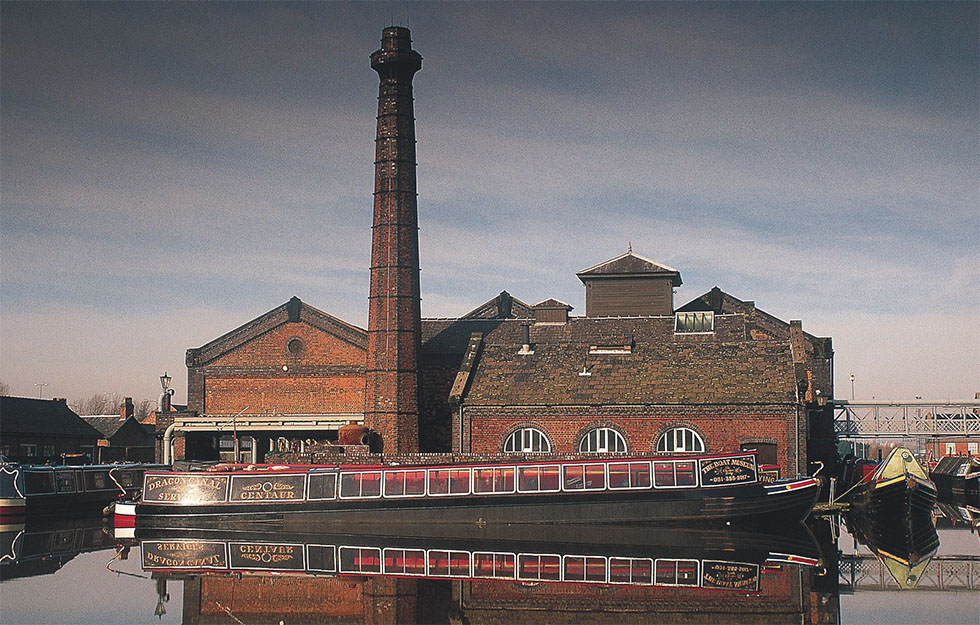
BRITAINONVIEW/ALAN NOVELLI
The area around Ellesmere Port, just a few miles north of Chester, was once home to several Viking villages; Great Sutton, Little Sutton and Hooton are listed in the Domesday Book. But Ellesmere Port itself, the northern terminus of the Shropshire Union Canal, was a shipping town almost from the start. The first boat workers’ houses clustered around the docks and along Dock Street, which is now the site of the National Waterways Museum.
The museum recreates the era when canals were the arteries of the Industrial Revolution. The largest floating collection of canal craft in Britain, the museum is just across the Mersey from Liverpool and housed in the buildings where once blacksmiths and boat builders toiled, horses were stabled and gas engines provided energy for the docks and the town of Ellesmere Port—originally called Netherpool.
Along with dozens of boats are re-created workshops, living quarters and a vast database archive called Virtual Waterways, a treasure trove for anyone tracing the history of Britain’s inland waterways.
“If you got on the (Shropshire Union) canal in 1795, you would arrive in the heart of the country near Wolverhampton,” says museum guide Linda Norbury. “This was a very important shipment dock, particularly in Victorian times. It’s cobbled so the horses wouldn’t slip when they came up from the stables. At one time the canal company owned 600 horses.”
Step aboard the British Waterways Shad and see how families created a living space not unlike today’s campers. A shelf folded down with a mattress unrolled on it formed a bed, while another shelf covering the well-stocked cupboard became a table. Baby slept in a little drawer or was tied securely on top while Mother steered the boat, competed with other boat women to crochet the best fly-proof headgear for the horse, or prepared rabbit stew on a tiny stove that appears better fitted for a child’s playhouse. A small “modesty flap” mandated by the government separated the parents’ and children’s sleeping quarters. At the end of the shipping era, many surviving boats were retrofitted to serve the leisure industry.
‘CANAL BOATS HAD THE SAME DÉCOR AS TYPICAL LAND COTTAGES;THE WALLS PAINTED WITH ROSES, CASTLES, AND LAKE SCENES’
Canal boats had the same décor as typical land cottages; the walls painted with roses, castles, and lake scenes, plates and clocks hanging on them. The women took pride in their elaborate teapots; the larger the better. Even the boatman’s stool might sport colorful flowers or hearts and diamonds.
“It was the high fashion, and they wanted a little bit of that in their tiny boat cabin,” Norbury says. With their children rarely in school and contact with land people limited, boat people formed a close community. But they were looked down upon as “inbred, ungodly, superstitious, unclean and illiterate,” Norbury says.
Vanner horses, which provided the horsepower for the boats, are depicted in fully caparisoned models and photographs.
“Generally it was in their own interests to look after their horses since that was the engine, after all,” Norbury says. “The older children might lead the horse some 15 miles each day. Stables were set along the routes so the horse would have six hours stabling every night.”
Workshops depict models, or in some cases, actual people at work building and painting boats, making harness and rag rugs, crocheting fly nets and creating “fenders,” the intricately plaited ropework knots that protected the sides of the boats.
Pointing out a coal boat called The Starvationer, Norbury notes that “the Duke of Bridgewater dug one of the first canals in the country to take coal from his mines in Manchester. The boats would go right inside the mine.” A model depicts a miner “legging it”—lying flat on his back and walking the boat through the mine tunnel with his feet. Another mannequin bends under the weight of a coracle, a portable fishing boat of woven willow covered in horsehide. The oldest boat on display, a dugout, is some 1,000 years old, used for fishing, not transportation.
A row of cottages illustrates life in several eras for the workers on shore. Cozy and cheerful, they are equipped variously with wallpaper, rugs, gas ranges, harmoniums, pianos, and primitive plumbing, including an outhouse complete with occupant. A table holds fish and chips wrapped in newspaper, while scones are ready to be baked. Children’s toys are scattered about and laundry rooms hold blocks of homemade soap and in one case, a huge mangle.
[caption id="TheNationalWaterwaysMuseumatEllesmerePort_img3" align="aligncenter" width="1024"]

ROGER PASCHKE
Ellesmere Port is still an industrial center and cargo port, home to the Vauxhall Motors car factory and a Shell Oil refinery. Visitors can look across the Mersey and see the skyline of Liverpool, and sometimes spot freighters carrying goods on the Manchester Ship Canal as they did two centuries ago.
Not to be confused with the town of Ellesmere, Ellesmere Port is just off junction 9 of the M53, or reachable by train and a brisk walk. The museum has branches in Gloucester and Towcester. For more information, see canalrivertrust.org.uk/places-to-visit/national-waterways-museum or www.virtualwaterways.co.uk

ROGER PASCHKE
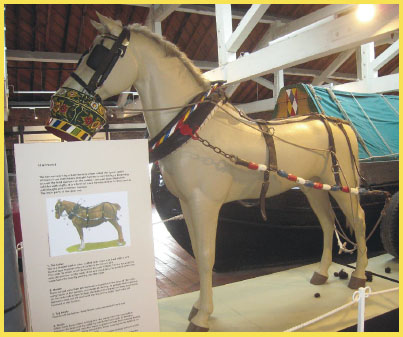
ROGER PASCHKE
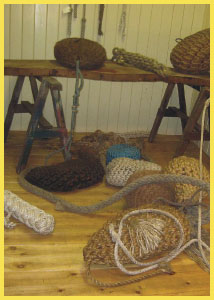
ROGER PASCHKE
[caption id="TheNationalWaterwaysMuseumatEllesmerePort_img7" align="aligncenter" width="166"]
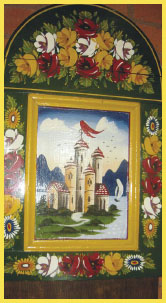
ROGER PASCHKE





Comments